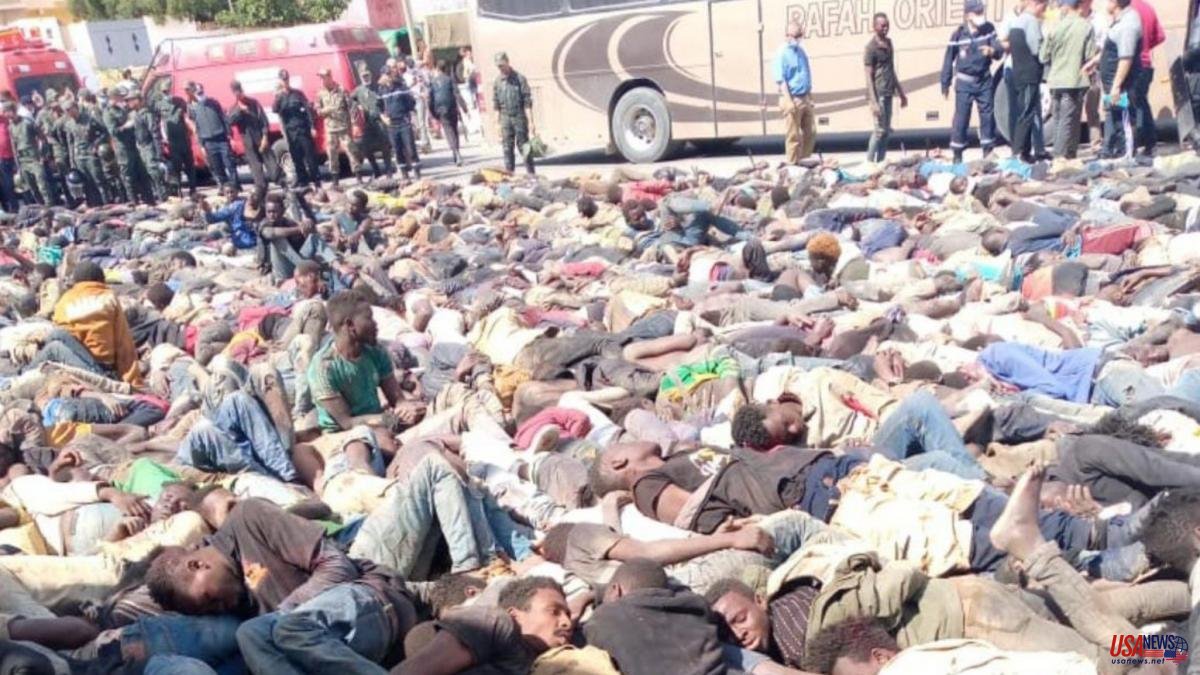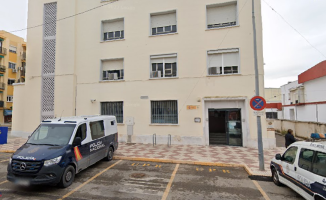It has been eight years and eight months since on the 27th of each month, without missing a single day, the parents of Emin Mohamed Driss, 20, and Abdeselam Ahmed Ali, nicknamed Pisly, 24, gather at the gates of the Palace of the Assembly of Melilla. In silence and with all the pain they ask for justice. The young people were shot by members of the Moroccan Royal Navy off the Punta Negri cape. The victims were not Sudanese migrants fleeing a war and trying to reach Spain. They were two Muslim Spaniards who lived in Melilla and who that day went fishing in a zodiac.
Not even three days had passed since the tragedy of the fence that ended the lives of an unknown number of migrants when the parents of Emin and Pisly concentrated, as they do every month. "If Morocco has not moved a finger to investigate what happened to those two Spanish kids, what can be expected from the deaths of those thirty men who, for the moment, nobody claims because their names are not even known?"
The words are from a high-ranking administration official who is well versed in the complex relations between Spain and Morocco, in Melilla. Friday marked a week since the frustrated attempt by some 2,000 men, mostly from Sudan, to enter Spain by forcibly crossing the perimeter, at the border crossing in Chinatown. The assault ended in the worst humanitarian tragedy in memory in Nador and Melilla. Seven days later, the local authorities continue to prohibit any approach to the Hassani hospital morgue. Not even the local NGOs that help sub-Saharans in Moroccan territory and that carry out an essential task of being the eyes in Morocco of desperate families looking for their missing loved ones have been able to access the place where the bodies are supposed to be still waiting for burial. The Moroccan Association for Human Rights in Nador has received requests in recent days from at least eight families in Sudan who do not know anything about a loved one. The association's leader, Omar Naji, has tried to access the morgue with the photographs received from Sudan to check if any of the disappeared are among the dead. But they haven't even let him get close.
The Sudanese media have begun to publish the photographs and stories of fathers, mothers, wives and brothers who do not know anything about their relatives, who are located for the last time in the forests near Nador.
The graves dug last week at one end of the Sidi Salem cemetery wait, empty. There are not a few voices from NGOs that warn of the possibility that Morocco has secretly buried the victims in another unknown part of the country.
Without bodies there will be no autopsy or elements that allow an accusation to be assembled, not even an independent investigation, as the president of the city, Eduardo de Castro González, warned this week in these same pages.
At the moment, the only investigation that is being carried out on the other side of the border is that of the Prosecutor's Office, which has opened proceedings against 64 people who will be tried as of July 13 in a Moroccan court and whose first statements to the police They appear in a summary to which the Efe agency has had access. Some statements in which the detainees detail their routes to reach Melilla from Sudan. Some, passing through Libya and Algeria, and others, through Chad, Niger, Mali and Algeria. In some statements, the mention of the same man coincides, whom they call "the Boss", "a Malian of about 35 years, corpulent and tattooed" who is located on a farm in the Algerian city of Magniya, a dozen kilometers from the border with Morocco, and managed the passage of many of them.
The account of their stay in the Gurugú camps also coincides, grouped by nationality and in the company of Sudanese men from Chad. A space led by some men who designed, insist the detainees, the strategy of how to advance to the fence and the functions that each group had to assume.
The humanitarian tragedy is unprecedented, nor was it usual, until the two assaults in early March, the presence of so many migrants from Sudan and Chad. Traditionally, they were men who fled the war in Darfur through the Libyan route, which they crossed, until seeking an entrance to Europe, embarking for example to Lampedusa, but far from Melilla.
A few months ago that changed radically. And the figures prove it. 92 percent of the Sudanese who requested protection in Spain obtained it. There are 102 who have refugee status and another 41 receive subsidiary protection. Barely 150 requests of the 62,766 asylum applications that were processed last year.
The 134 men who crossed on Friday and, badly injured, exhausted and with a truncated happiness because they jumped over the corpses of their compatriots, have already started the asylum application process. As did a few hundred, mostly from Sudan, who achieved it in two massive jumps in early March, the last before the new relationship between the governments of Spain and Morocco.
There are those in Melilla who do not lose hope that something can change on the other side of the fence after the tragedy. In recent days, a powerful general displaced from Rabat has been seen in Nador preparing a report on the actions of the Gendarmerie and the other soldiers, police and auxiliaries who participated, without any kind of coordination or strategy, in containing the human rush. Some police sources that trust that the neighboring country will design an action plan for future jumps, which, no one doubts, there will be.













